By Michael D. Hull
Corporal Bill Hedges of the Australian Army was part of the force that fought Japanese troops back across the rugged Owen Stanley mountain range in New Guinea after their failed advance toward Port Moresby in 1942.
Hedges led a patrol into an encounter at Templeson’s Crossing. After a fierce firefight, he and his men were forced to retreat, leaving behind six Australian dead and four wounded. The next day, after being reinforced, the Aussies recaptured the position and were shocked at what they found. The Japanese had cannibalized the dead and wounded soldiers.
“We found them with meat stripped off their legs, and half-cooked meat in the Japanese dishes,” Hedges reported. “And we were very shocked and surprised to think that our enemy was that dirty.”
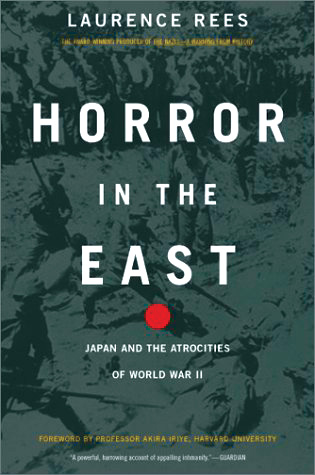 Elsewhere in New Guinea during the bitter 1942-1943 campaign, Japanese troops often resorted to cannibalism simply because they were starving. British, Australian, and American ships and planes incessantly choked off the enemy’s tenuous supply lines (Japanese logistical systems were notoriously ineffective or nonexistent during World War II). But this was not the case at Templeson’s Crossing, where Corporal Hedges and his men inexplicably found substantial dumps of rice and canned food.
Elsewhere in New Guinea during the bitter 1942-1943 campaign, Japanese troops often resorted to cannibalism simply because they were starving. British, Australian, and American ships and planes incessantly choked off the enemy’s tenuous supply lines (Japanese logistical systems were notoriously ineffective or nonexistent during World War II). But this was not the case at Templeson’s Crossing, where Corporal Hedges and his men inexplicably found substantial dumps of rice and canned food.
Hatam Ali, an Indian soldier in the British Army who was captured by the Japanese early in 1942, recalled that at his internment camp, “there was no medical treatment, and all prisoners who fell ill were immediately killed by the Japanese.” When their captors ran out of rations, said Ali, they started selecting prisoners, and “every day, one prisoner was taken out and killed and eaten by the Japanese.” As the enemy grew more desperate, Ali recorded, they began hacking flesh from living POWs before throwing them into a ditch. The bodies of Australian soldiers killed in action were preferred to those of POWs or Japanese soldiers who had died of disease.
From Nanking to Singapore, and from Bataan to Mandalay, Japanese cruelty toward military foes, captives, and women and children in the 1930s and World War II was widespread. In Horror in the East (Da Capo Press, Cambridge, Mass., 2002, 160 pp., 41 photographs, index, $24.00, hardcover), Laurence Rees examines the full horror of the conflict in the Pacific region. Using many unpublished interviews with both victims and victimizers, and drawing upon dusty, long-ignored archives in several countries, he has written a harrowing chronicle of appalling inhumanity that is intelligent, provocative, and absorbing.
It is a reasoned and balanced study, and Rees, a BBC writer-producer and creator of acclaimed documentaries, dispels the popular myth that the “inscrutable” Japanese acted the way they did from 1931 to 1945 simply because they were a uniquely cruel people. The author explains, “a combination of cultural belief and geographical and historical circumstance caused Japanese society to evolve, in the first half of the 20th century, to a point where the very human desire to belong, to fit in, to be part of the group had been elevated to an all-embracing quasi-religion.” It needed, he says, “only a group of ardent militaristic nationalists to make of this society a powerful and fanatical weapon, able to produce an army capable of great crimes.”
Ironically, as he points out, they had treated their prisoners kindly during the 1904-1905 Russo-Japanese War, while 4,600 Germans captured by the Japanese (Allies of the British) in the Asian colony of Tsingtao during World War I were treated as “guests.” They drank beer, made sausages, swam, formed a gymnastics club, staged musical shows, and generally “had a nice time.”
This work of penetrating scholarship and lucid prose helps us understand better the actions of the Japanese in World War II.
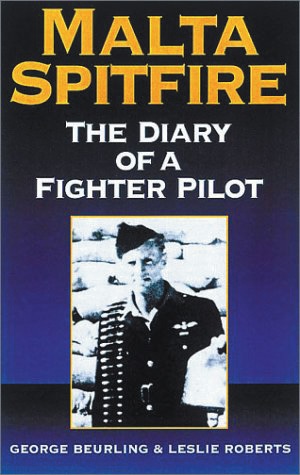 Malta Spitfire by George Beurling and Leslie Roberts, Stackpole Books (Greenhill Books), Mechanicsburg, Penn., 2002, 240 pp., 16 photographs, drawings, appendix, $19.95, softcover.
Malta Spitfire by George Beurling and Leslie Roberts, Stackpole Books (Greenhill Books), Mechanicsburg, Penn., 2002, 240 pp., 16 photographs, drawings, appendix, $19.95, softcover.
Born in Montreal, Quebec, on December 6, 1921 to a Swedish father and an English mother, George Frederick Beurling caught the flying bug early.
Airplanes and getting them up “into the free sky” were the beginning and end of his thoughts and ambitions. Like thousands of other boys all over North America in the 1930s, George Beurling dropped anything he was doing in order to watch planes pass overhead. He whittled flying models and spent his Saturdays and after-school hours watching pilots of the Montreal Light Aeroplane Club at an airfield three miles from his home.
When World War II came in 1939, he itched to fly in defense of freedom. But it was not an easy war to get into, he recalled later. It seemed to be “a private war, reserved for university graduates … or former glassblowers, but certainly not open to young men whose principal qualification was a desire to get in there and fight.”
But Beurling was a single-minded young man and knew that he could be a peerless fighter pilot if given the chance. He joined the Royal Air Force in 1940 at the age of 19, flew a series of sweeps over northern France, and experienced his finest hour in the skies over embattled Malta in the furious summer of 1942. There, a handful of RAF Gloster Gladiator and Supermarine Spitfire pilots scrambled day after day to battle swarms of German and Italian bombers and fighters, defending the most bombed patch of ground in the world.
“Screwball” Beurling, as he and collaborator Leslie Roberts relate in this lively, fast-paced account, showed himself to be one of the best fighter pilots of the war. In 14 days of combat he destroyed 27 enemy planes, damaged eight, and probably destroyed three more. One of his officers remarked, “He was a wonderful pilot, and an even better shot.” Beurling won four decorations for gallantry and a commission within two months.
But Beurling was a complex and driven character, and his strident individualism was not appreciated by his superiors in the RAF, and even less so by those in the Royal Canadian Air Force to which he transferred in 1943. After scoring four more victories over northwest Europe, he returned to Canada in 1944 and was “allowed to retire from the service.”
Beurling was unable to settle down in civilian life, and drifted from one endeavor to another. He found his new destiny in 1948 when he signed on as a volunteer pilot in the new Israeli Air Force, but was killed when the Norduyn Norseman ferrying him blew up on takeoff from Rome that May. Sabotage was suspected.
This gripping narrative, which places the reader virtually in Beurling’s cockpit, is an outstanding aviation memoir, an engaging study of a gifted combat flier, and an inside look at the epic defense of strategic Malta during 1941 and 1942.
Recent and Recommended
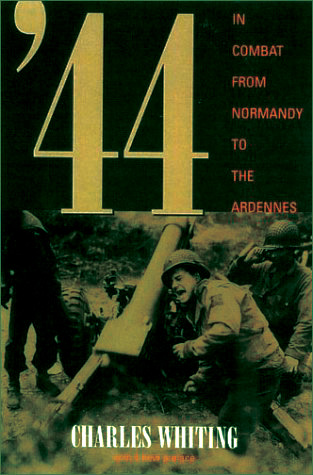 ’44: In Combat from Normandy to the Ardennes by Charles Whiting, Cooper Square Press, New York, 2002, 220 pp., 29 photographs, 4 maps, notes, index, $17.95, softcover.
’44: In Combat from Normandy to the Ardennes by Charles Whiting, Cooper Square Press, New York, 2002, 220 pp., 29 photographs, 4 maps, notes, index, $17.95, softcover.
Precisely four years after the British Expeditionary Force had been chased ignominiously from the smoking beaches of Dunkirk, the long-awaited hour of retribution was at hand.
The entire southern half of England, from the Wash to Land’s End, was one vast, armed camp, crowded with soldiers—British, American, Canadian, Free French, Polish, Dutch, Belgian, Czech, Danish, Norwegian—all primed and poised to cross the English Channel and liberate the European continent from its Teutonic oppressors. Through May 1944, the streets of London and the roads and lanes of rural England were choked with long convoys of Sherman and Churchill tanks, half-tracks, prime movers, and field guns of all caliber, jeeps, Bren-gun carriers, trailers, scout cars, armored cars, and laden trucks, all rolling south.
The forces of deliverance were on the move, as Charles Whiting writes in his evocative and affecting record of the Allied experience from Normandy to the Bulge, viewed through the eyes of the combat soldiers. It is a saga of confidence and exhilaration turning to disillusionment as the campaign against a determined, highly effective foe became blunted by costly stalemates, strategic blunders, strained Allied relations, and ideals evaporating in the brutal reality of war.
The first seven months of the Allied soldiers’ great crusade unfold in Whiting’s dramatic, unflinching chronicle and, like his many other World War II studies, it is a page-turner. A scrupulous archivist and inspired storyteller, he is one of the most compelling historians in print today.
As his narrative shows, there was no hoped-for Allied victory in 1944. The high hopes of that gray spring and bright summer were irretrievably lost in the snow and fog of the Ardennes Forest, where the Allies suffered 76,000 casualties, mostly American. Allied plans for an offensive into Germany had to be postponed for six weeks, and it would be three months before British, U.S., and Canadian units crossed the River Rhine.
Rich in detail about the soldiers on both sides and studded with anecdotes of their experiences—heroic, tragic, ironic, and sometimes humorous—Whiting’s book is a powerful reminder that war is neither romantic nor glorious.
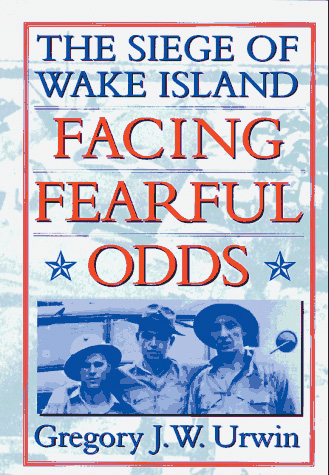 Facing Fearful Odds: The Siege of Wake Island by Gregory J.W. Urwin, University of Nebraska Press, Lincoln, 2002, 727 pp., 50 photographs, six maps, appendices, notes, index, $29.95, softcover.
Facing Fearful Odds: The Siege of Wake Island by Gregory J.W. Urwin, University of Nebraska Press, Lincoln, 2002, 727 pp., 50 photographs, six maps, appendices, notes, index, $29.95, softcover.
As Americans reeled from the sneak Japanese attack on Pearl Harbor in December 1941, their morale received a major boost—thanks to a handful of brave men on a remote, scrubby coral atoll thousands of miles away.
At Wake Island, a tiny way station for Pan American Airways clippers in the northwest Pacific Ocean, a U.S. Marine Corps battalion aided by several hundred construction workers, sailors, and Army radiomen fought a defensive action against heavy odds that made headlines and imparted hope to their countrymen. The 16-day siege was a relatively minor engagement, yet it had a profound psychological effect on the course of America’s struggle.
Rushed into production in the autumn of 1942, a rousing film, Wake Island, directed by John Farrow and starring Brian Donlevy, Robert Preston, William Bendix, and Macdonald Carey, bolstered both Marine Corps recruiting and war-bond sales. The gallant fight it vividly depicted did little to alter the course of the Pacific war, but it assumed a symbolic importance that outweighed its strategic consequences, as Gregory Urwin makes clear in his massively detailed, deftly organized, and literate history. Told from the perspective of junior officers and enlisted men on the spot, this is the most thorough study we have yet seen on the defense of Wake.
After extensive archival research and interviews with 70 American and Japanese veterans, Urwin, a history professor at Temple University, relates the full saga of Wake Island—the planning and political struggles that transformed it into a naval air station; the U.S. Navy’s 11th hour efforts to garrison and fortify it; the abortive relief convoy attempt; and the air, sea, and land attacks that resulted in the atoll’s inevitable capture by Imperial Japanese Navy units. Hour by hour, Urwin chronicles the doomed defense, highlighting the punishing enemy air raids, the gallant sacrifice of Wake’s handful of Grumman F4F Wildcat fighter planes, and the driving off of the initial Japanese landing force on December 11. This was the only time in the war, and perhaps in history, that coastal batteries repelled an invasion fleet.
The stand at Wake, the author points out, furnished dramatic proof of Marine Corps combat readiness. High recruiting standards and training that stressed basic infantry skills ensured that the atoll’s defenders were disciplined and resourceful fighters. Artillerymen, machine-gunners, and fliers took up Springfield rifles and Tommy guns when their heavier weapons were put out of action, and they resisted until ordered to surrender. Urwin’s book is a testament to leatherneck pride and brotherhood, while tendering full credit to Dan Teters’ construction workers and the others who fought. When Wake fell, says the author, its defenders remained unbeaten in spirit. They endured 44 months in prison camps with the lowest death rate of any group of white prisoners taken by the Japanese.
Distinguished by thorough historical and technical detail, and rich in human color throughout, this is a masterful narrative of 16 grim days and nights when the American spirit gleamed forth.
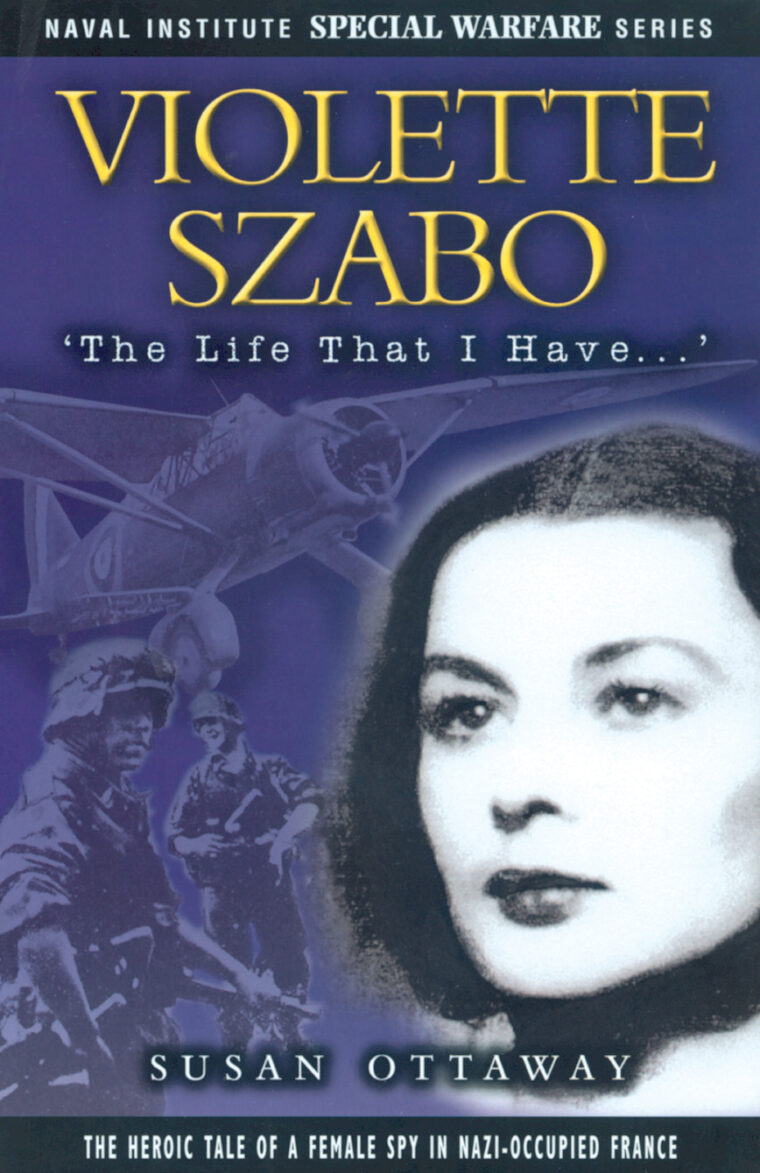 Violette Szabo by Susan Ottaway, Naval Institute Press, Annapolis, Md., 2002, 194 pp., 38 photographs, appendices, index, $32.95, hardcover.
Violette Szabo by Susan Ottaway, Naval Institute Press, Annapolis, Md., 2002, 194 pp., 38 photographs, appendices, index, $32.95, hardcover.
Beautiful, clever, and brave, Violette Reine Elizabeth (Bushell) Szabo was one of the great heroines of World War II.
Shattered by the death of her husband, Etienne, an officer of the Free French Forces, at the great Battle of El Alamein in October 1942, she turned her grief into action and volunteered for covert duty with the Special Operations Executive, the British equivalent of the U.S. Office of Strategic Services. After undergoing rugged Commando-like courses in the Scottish Highlands and parachute training at Ringway, near Manchester, England, she jumped from a Royal Air Force Lysander fighter into Nazi-occupied France to work with the Resistance.
Szabo scouted underground efforts in the Rouen area, talked her way out of an arrest by gendarmes, and took part in a furious gun battle at a German roadblock near Salon-la-Tour on June 10, 1944. Using her Sten gun, she fought it out with “great coolness and gallantry” for 20 minutes, allowing a comrade to escape, until she ran out of ammunition and was captured by the Gestapo. She was held in the Limoges Prison, was transferred to the Neue Bremm concentration camp in Saarbrucken, Germany, and wound up in the infamous camp at Ravensbruck that was dubbed “hell on earth.”
There, as were hundreds of other women and girls, the spirited Violette Szabo was led into a stone execution alley by SS troops and shot in the back of the neck on January 25, 1945. She was one of 13 female SOE operatives who died in German prison camps.
Based on recently discovered papers and updating an earlier book that became the 1958 British film Carve Her Name With Pride, starring Virginia McKenna, this is the inspiring and gripping biography of a remarkable woman. She was “the bravest of us all,” said another legendary British heroine of the Resistance, Odette (Churchill) Sansom Hallowes.
Writer Ottaway’s portrait of Szabo, the result of long and extensive research, is absorbing and rich in human detail as it traces her life from her birth in the town of Levallois-Perret, northwest of Paris, on June 26, 1921, and her move to rural Berkshire, England at the age of three, and through her service in the British Women’s Transport Service, her perilous missions in France, and her grim months in Nazi hands, during which she showed great reserves of valor.
After her death, King George VI presented a posthumous George Cross, Britain’s highest civilian honor, to her four-year-old daughter, Tania, in December 1946. Tania also received the Croix de Guerre on behalf of her mother. Szabo is memorialized at the British Military Cemetery in Brookwood, Surrey, and by a museum at Wormelow near Hereford.
This book captures definitively and gracefully the spirit of Violette Szabo, a lovely young woman of talent and courage who sacrificed herself for freedom. Ottaway is also the author of a biography of RAF Wing Commander Guy Gibson, leader of the famous 1943 Dambusters Raid, who won the Victoria Cross.
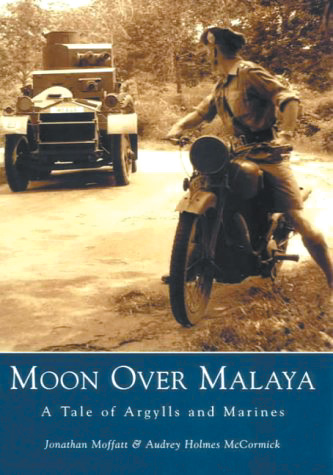 Moon Over Malaya by Jonathan Moffatt and Holmes McCormick, Tempus Publishing Ltd., Stroud, Gloucestershire, England, 2002, 256 pp., photographs, maps, index, $26.99, softcover.
Moon Over Malaya by Jonathan Moffatt and Holmes McCormick, Tempus Publishing Ltd., Stroud, Gloucestershire, England, 2002, 256 pp., photographs, maps, index, $26.99, softcover.
One of the British Army’s famed regiments, the Argyll and Sutherland Highlanders, dealt the first Allied blow to the myth of Japanese invincibility in World War II.
At the two-hour Battle of Titi-Karangan in the steamy swamps and rubber jungles 30 miles east of Penang Island, Malaya on December 17, 1941, the 2nd Battalion (“Old 93rd”) of the Argylls inflicted severe damage on an advancing Japanese force at least six times its size. Using old Lanchester armored cars, Bren guns, and twin Vickers machine guns, but with no artillery support or radio contact, the Highlanders killed between 200 and 400 enemy soldiers as the fast-moving, lightly armed Japanese, many disguised in native dress, tried to outflank them. Fierce, noisy British bayonet charges unnerved the Japanese.
In the weeks that followed, the Argylls, Royal Marines, and other British units repeated this success in six major engagements and numerous skirmishes with the Nipponese invaders along the 150 miles of the strategic Grik Road. Battalions of 800 British soldiers fought Japanese regimental groups numbering almost 6,000 men, and each time the British inflicted casualties far exceeding their own. They bought precious time for the retreating Third Indian Corps.
Despite the courage and determination of Malaya’s defenders, there was little to stop the Japanese juggernaut as it rolled southward down the Malaya peninsula toward the prize—Singapore, the Gibraltar of the Far East. The British were not trained in jungle fighting and were too dependent on road movement. They had almost no tanks, and their air power had been knocked out at the time of the Japanese invasion on December 8, 1941.
The tragic and little-known saga of what happened in Malaya and Singapore from December 1941 to February 1941, focusing on the Argylls and their Royal Marine comrades, unfolds in this revealing narrative by Singapore-born BBC television producer Audrey Holmes McCormick and historian-teacher Jonathan Moffatt. Drawing upon firsthand accounts, this candid and vivid book sheds valuable light on the fighting retreat that was forever overshadowed by the shame of the Singapore surrender, the worst disaster in British military history.
The authors show that Malaya’s defenders, like the Americans and Filipinos on Bataan, were inadequately trained and poorly equipped, yet fought on without hope of relief or reinforcement. Their reward would be a nightmarish struggle for survival in Japanese prison camps.
Plainly told, brutally honest, and laced with humor and irony, this is a powerful insight into the dark early months of 1942 when Japanese aggression seemed unstoppable.
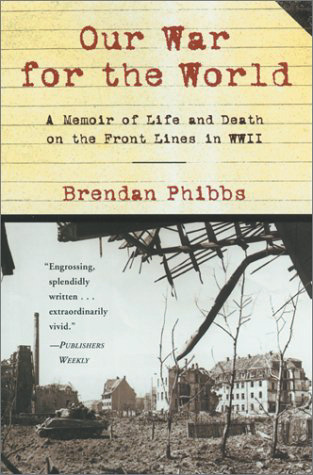 Our War for the World by Brendan Phibbs, Lyons Press, Guilford, Conn., 2002, 341 pp., 22 photographs, $16.95, softcover.
Our War for the World by Brendan Phibbs, Lyons Press, Guilford, Conn., 2002, 341 pp., 22 photographs, $16.95, softcover.
“For a long time, we had had to leave our dead lying around, anyhow, in roads and ditches and fields, and we had hated it.
“More times than any of us cared to remember, we had looked up at a circle of faces and said simply, ‘He’s dead; leave him…. In our world, a dead man simply had to lie there, naked to the snow or the rain, dying over again anytime anybody looked at him or came into the range of his staring eyes. Our dead had to be dumped like rubbish, and ignored….
“We learned to be selectively callous: German dead didn’t count at all, and men from other units not as much, but our dead from our own battalions, our friends from our terribly close family of survivors, their deaths diminished us, and we left bits and pieces of our being sprawled in the mud or snow from Lorraine across Germany.”
A window on the grim realities of front-line war is opened in this memoir by Brendan Phibbs, a combat surgeon who served in Combat Command B of the 12th Armored Division, Seventh Army, in the miserable winter of 1944 and the glorious spring of 1945. Stark yet poetic, unrelenting yet passionate, it is a searing portrayal of reluctant American citizen-
soldiers hardened in the crucible and struggling to stay alive in the waning months of World War II as the Allied armies rolled into Germany.
Based on scribbled notes Phibbs stuffed into his musette bag, the eloquence and intensity of this book place it far above the level of most similar works. It has pace and power.
As a member of the lead point of the southern Allied pincer, hitting Ansbach and pushing on into Germany in the winter and spring of 1945, the author writes of rescuing wounded men from the battlefield, interrogating enemy prisoners and collaborators, and being among the first Americans to enter the typhus-ravaged Dachau concentration camp near Munich. He writes with brutal honesty and spares no one, fat, indignant German housewives venting their outrage on advancing GIs because their windows had been broken by Allied gunfire, and inept Army bureaucrats and officers whose decisions often resulted in needless deaths.
With extraordinary perception and feeling, Phibbs memorializes his men and the war they fought. The author is now a professor of clinical medicine at the University of Arizona Medical Center.
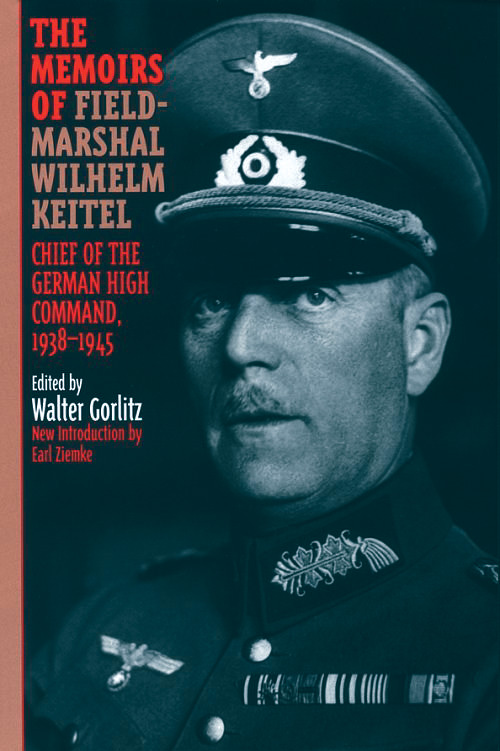 The Memoirs of Field Marshal Wilhelm Keitel Walter Gorlitz ed., Cooper Square Press, New York, 2002; 288 pp., four maps, notes, index, $18.95, softcover.
The Memoirs of Field Marshal Wilhelm Keitel Walter Gorlitz ed., Cooper Square Press, New York, 2002; 288 pp., four maps, notes, index, $18.95, softcover.
Maj. Gen. Wilhelm Bodewin Johann Gustav Keitel’s life changed drastically in October 1935.
At the age of 55 and in the 35th year of an atypical military career, he was on the verge of taking retirement. He had recently inherited his family’s large farm near Brunswick in north-central Germany, and he would all along rather have been a farmer than an Army officer.
But then Nazi Germany’s new leader, Adolf Hitler, named Keitel as head of the Armed Forces Office in the Defense Ministry. A subsequent reorganization lifted Keitel, in the tables of organization at least, to the military position closest to Hitler. But the Führer advanced himself to supreme commander of the armed forces and did not propose to delegate any power, so Keitel found himself to be neither his deputy nor chief of staff.
A tall, ponderous, monocled man lacking both personality and intellectual range, Keitel had been severely wounded in World War I, and was a solid but plodding staff officer. He had no authority to issue orders to the service commands and was solely concerned with routine administrative matters. Keitel was involved in most strategic decisions, but only to the extent of giving advice to his master, and then only when it was sought. But in less than three years, he rose four grades to field marshal.
His call of duty was clear, and the farm was no longer a viable alternative. Keitel became Hitler’s shield bearer, carrying out his orders without question and gaining the label of
lakaitel (lackey). The Führer called him his “chef de bureau” (office manager), and Keitel’s other nickname was “nickesel” (a toy donkey that nods its head).
Written in the six weeks before he was hanged at Nuremberg, Field Marshal Keitel’s memoirs offer a candid, revealing, and important glimpse into the working high levels of the Third Reich, a grim illustration of widespread moral confusion and misuse of honor and loyalty. Keitel himself appears as a tragic figure living in a demonic world peopled by automatons who all lacked one vital asset—a sense of morality.
This is an unparalleled insider’s account of Nazi Germany, including Hitler and its other leaders, its uncoordinated and often inefficient ministries, service branches, and industrial complex, and its diabolical philosophies and sometimes disastrous strategies.
At Nuremberg, as his extraordinary book shows, Keitel did not seek to save his own skin, although he pleaded that he had merely obeyed orders. He did not haggle or bargain with the Allied prosecutors but endeavored to uphold his honor and that of all German soldiers. After being found guilty of conspiracy to wage a war of aggression, waging such a war, war crimes, and crimes against humanity, Keitel walked bravely to the gallows on October 16, 1946.
Editor Gorlitz is a leading German historian.
Ghost Front by Charles Whiting, Da Capo Press, Cambridge, Mass., 2002, 219 pp., 23 photographs, 3 maps, index, $27, hardcover.
Late in November 1944, there was considerable activity in the villages of the scenic 40-mile-by-20-mile Eifel region separating western Germany and eastern Luxembourg.
With each dawn, it seemed to the villagers, batches of fresh-faced young men clad in the field gray of the German Army appeared in their midst as if by magic. There were soldiers and equipment in sheds and barns, shell cases were packed in gardens, and tanks, personnel carriers, flak guns, and armored reconnaissance cars were hidden everywhere. Down on the Prum River, infantry companies practiced crossings in rubber boats.
By the end of the month, the German Reichsbahn had secretly delivered 200,000 men, 2,000 guns, and 500 panzers to the wooded area between the Luxembourg town of Echternach and the German town of Prum. This force—the Fifth Panzer Army and the Seventh Army—outnumbered by almost four to one Major General Troy H. Middleton’s U.S. VIII Corps, spread thinly a few miles away along the 60-mile front of the Eifel-Ardennes Forest.
The American front was manned by the weary 4th and 28th Infantry (“Bloody Bucket”) Divisions, recovering from their ordeal in the Hurtgen Forest campaign, and the green 106th Infantry (“Golden Lion”) Division, which had been in the line only a few days. Because Allied thinking—from Eisenhower’s headquarters down to the regimental level—held that the Wehrmacht was no longer capable of major offensive action, complacency and slackness reigned. The Eifel-Ardennes sector was so quiet that it was dubbed the “Ghost Front.”
But, as Charles Whiting shows in his history of the Eifel-Ardennes on the eve of the Battle of the Bulge, the Germans were stealthily mustering strategic reserves in a campaign of deception comparable in magnitude to the equally successful effort undertaken by the Allies before the Normandy invasion. German patrols were out every night probing the U.S. front. They mapped emplacements, headquarters, artillery batteries, and armor concentrations.
With the military insight and narrative flair that distinguished his 200 other books about World War II, Whiting has written a dramatic and provocative examination of the intelligence blunder that resulted in the largest and costliest battle in the annals of the U.S. Army. It is fast-paced, carefully documented, and disturbing. The author analyzes the pre-Bulge euphoria that infected the Allied high command and how its intelligence officers, most notably Brigadier General Edwin L. Sibert, Bradley’s intelligence chief, hesitated to voice warnings about the German threat for fear of being labeled defeatists.
Whiting paints an evocative, haunting canvas of the Ghost Front before the December 16, 1944, German onslaught, as the GIs and their officers caroused at Friday night parties in garrison towns, made plans for Christmas, and grew lax about sending out patrols. But not all of the Americans on the line felt as secure as their headquarters staffs. Facing the series of Luxembourg villages that the GIs called “Skyline Drive,” Captain Frederick Feiker, commanding K Company of the 110th Infantry Regiment, sent out patrols by day because he had a feeling that something was not quite right. But the patrols were withdrawn when darkness fell. Something was going on, Feiker sensed, but what?
There had been a few mysterious disappearances of lone Americans, and a jeep carrying three Army doctors was ambushed. Their bodies had been left, but their uniforms and the jeep had been stolen. Feiker’s questions would soon be answered as the panzers rolled through the misty Ardennes and breached the American lines.
Whiting, who served in a British Army reconnaissance unit during the war, has written a compelling page-turner that fills some significant gaps in the saga of the Bulge.
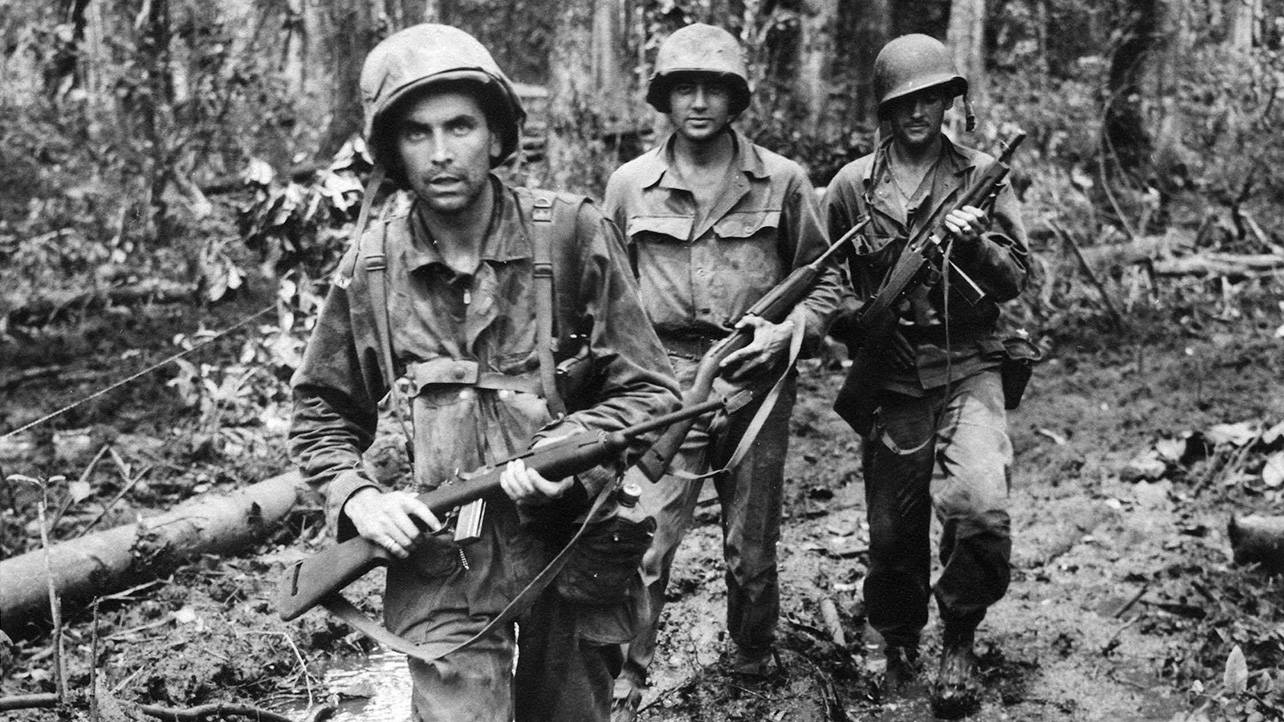
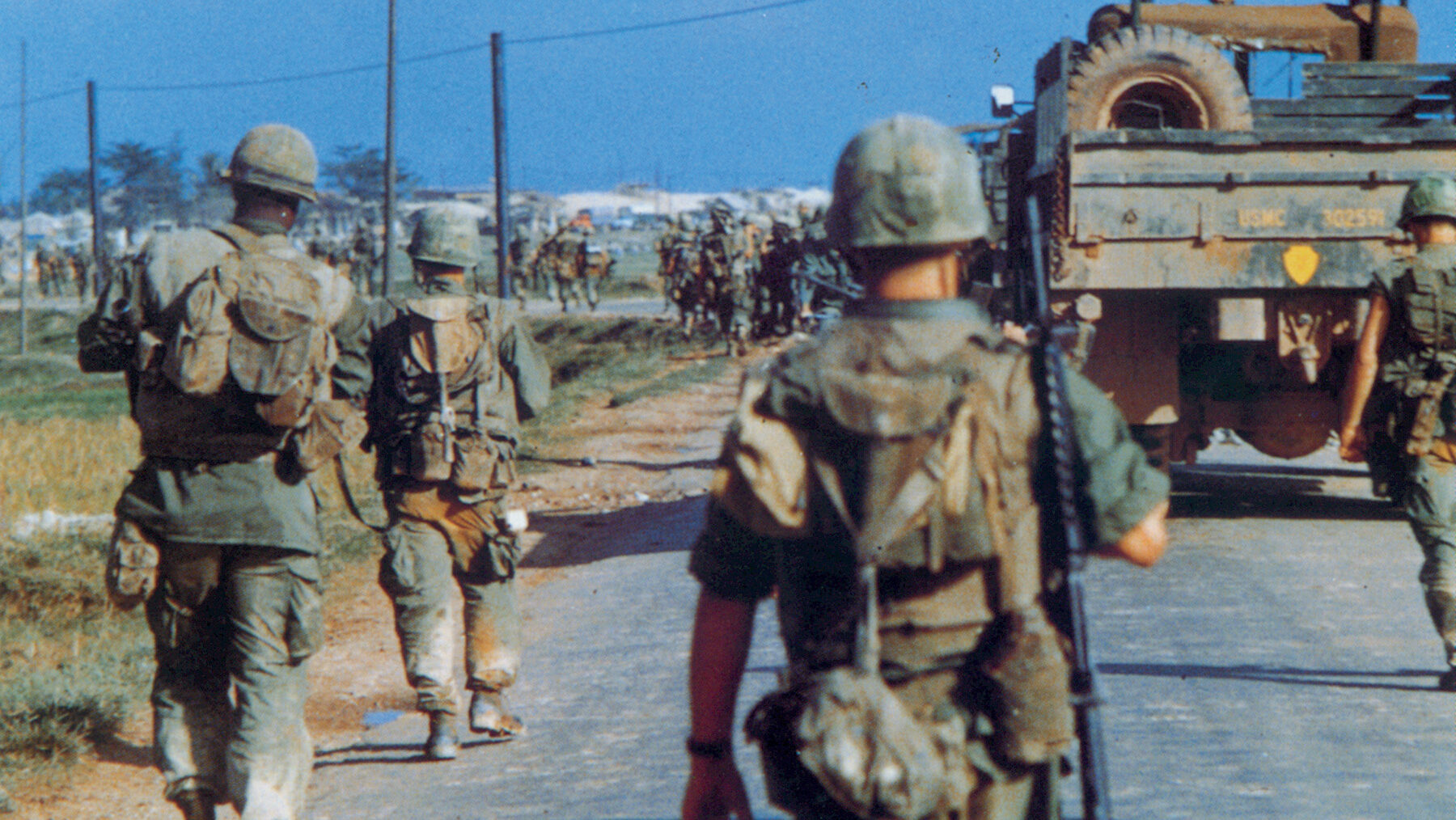
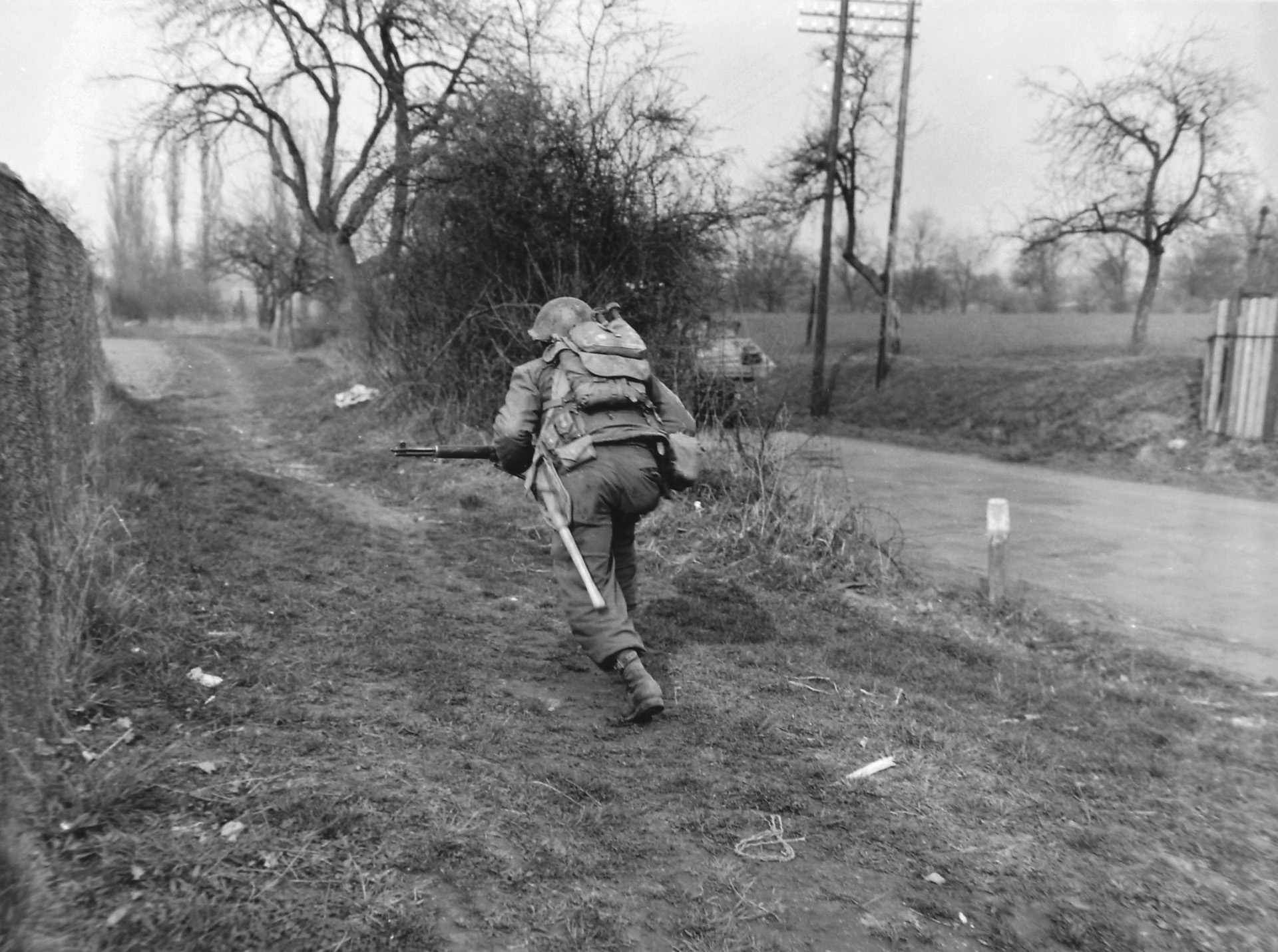
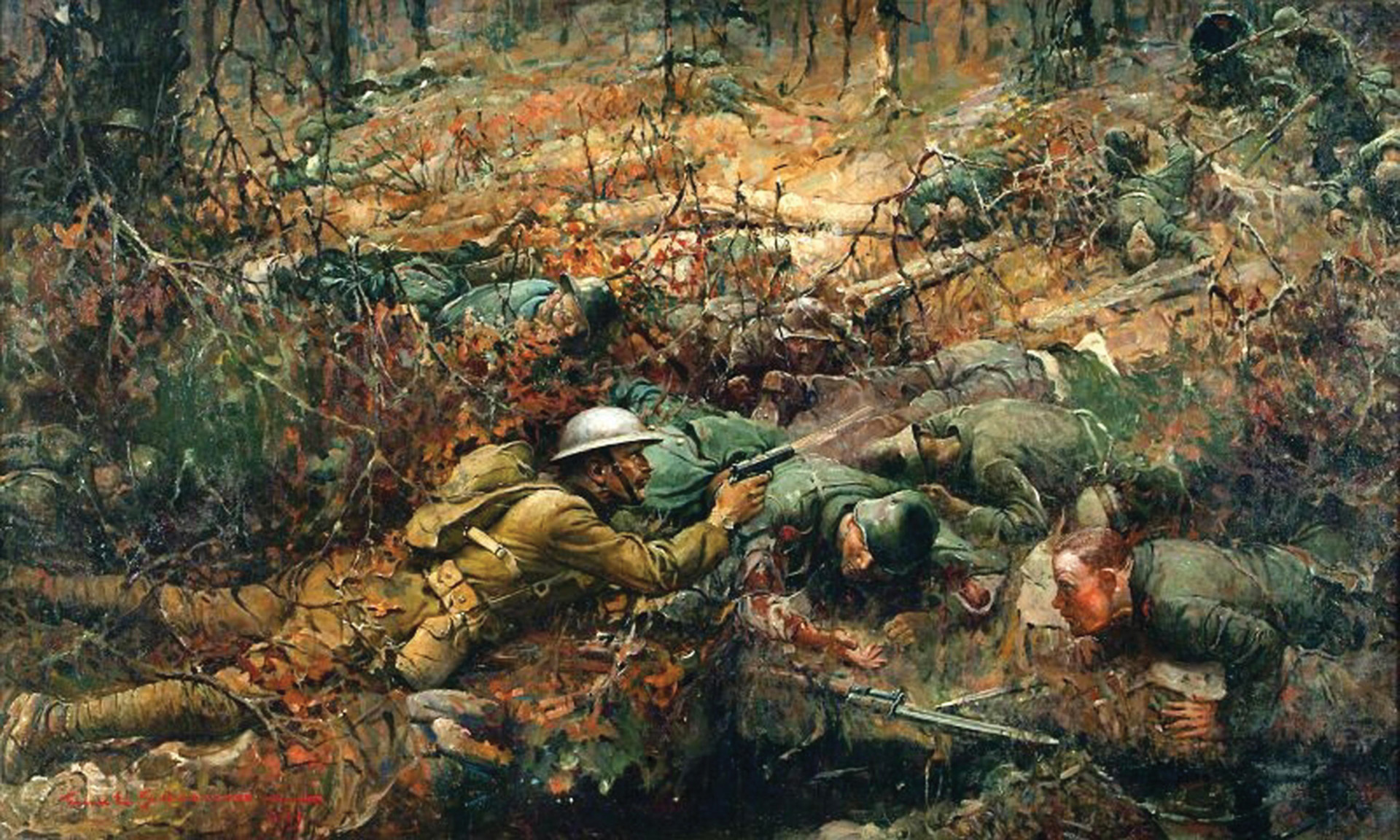
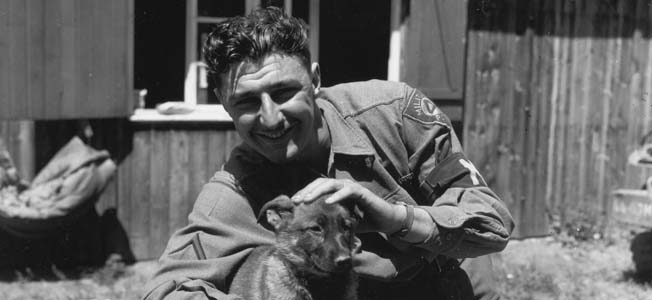
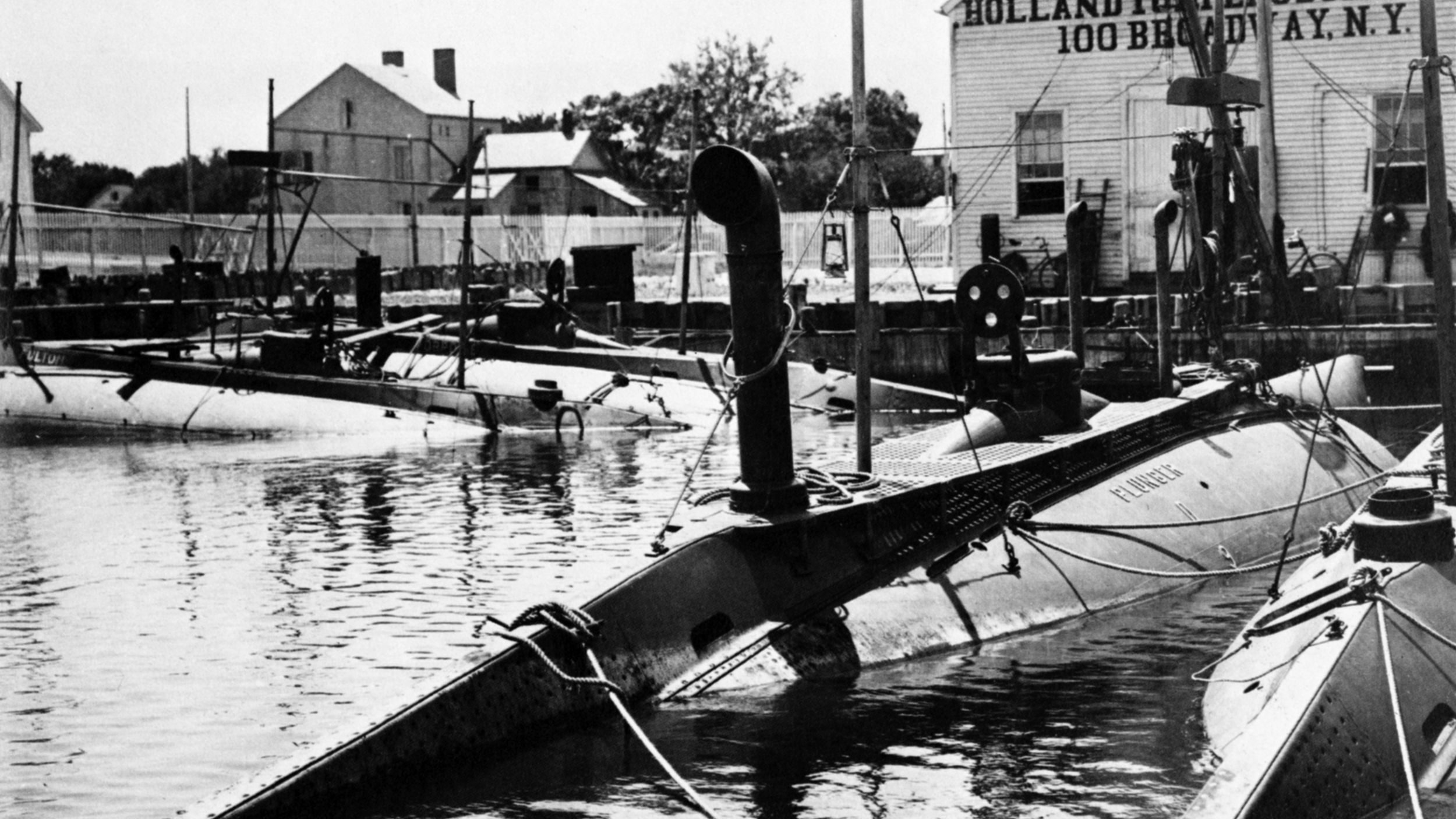
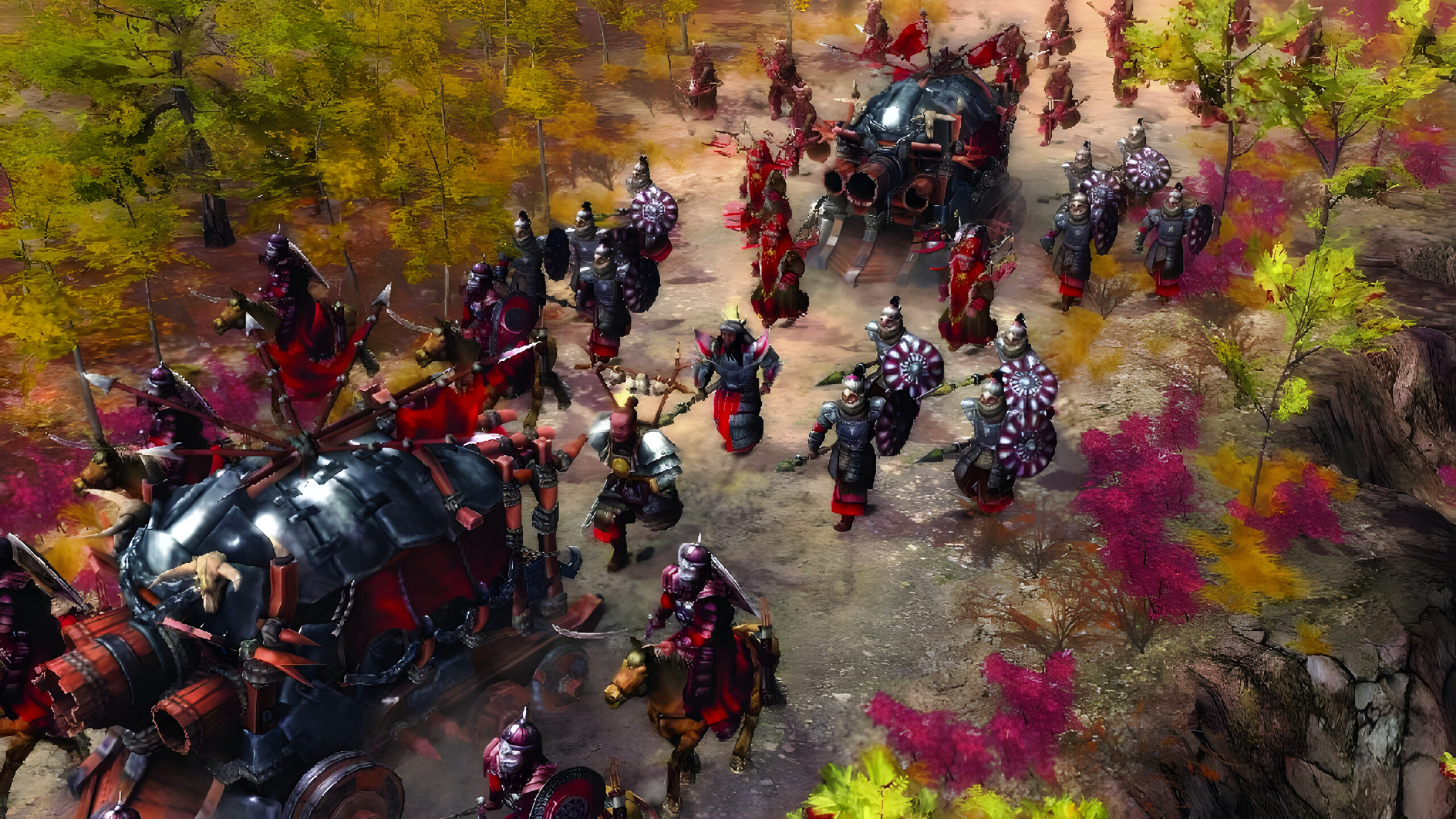
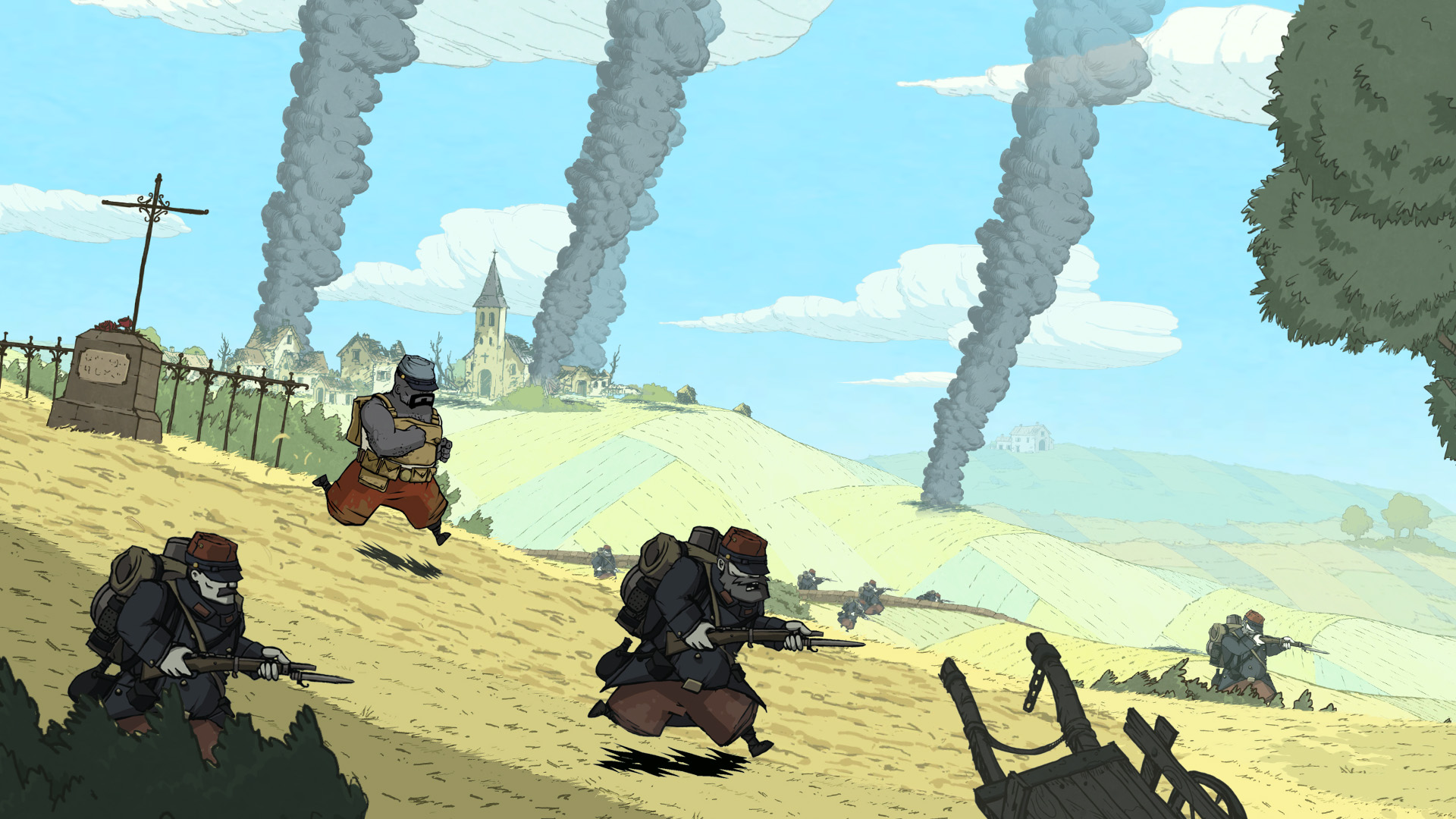
Join The Conversation
Comments
View All Comments